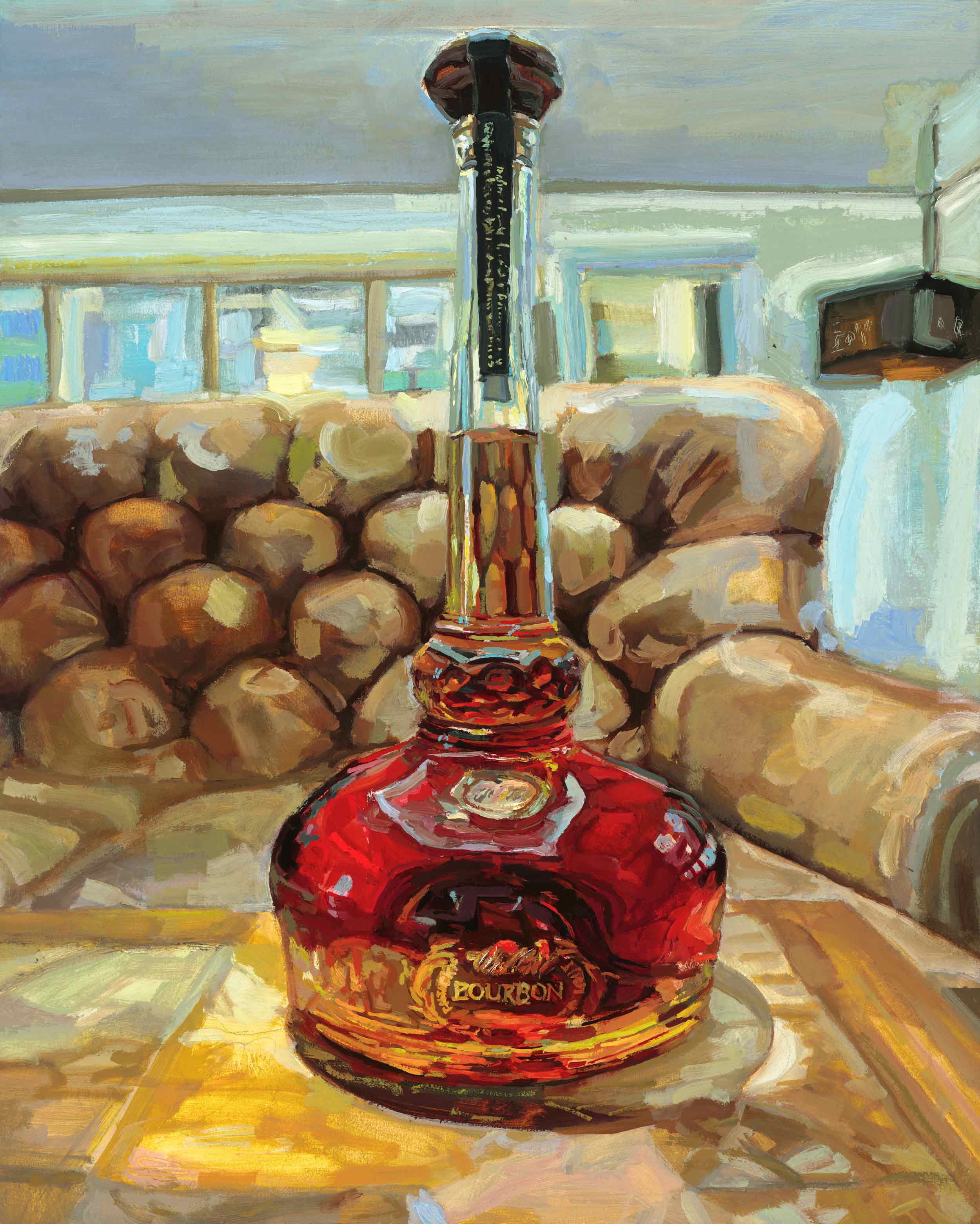Limited Edition Bourbon Art: Why Collectors Are Flocking to Distinct Finds
Limited Edition Bourbon Art: Why Collectors Are Flocking to Distinct Finds
Blog Article
Catching the Significance of Bourbon Art Via One-of-a-kind Visual Representations and Styles
The art of bourbon prolongs past the fluid itself, manifesting through a selection of aesthetic depictions that envelop its fabled heritage and craftsmanship. What continues to be to be uncovered is how these advancing designs reflect not only the whiskey itself yet likewise the changing landscape of imaginative analysis. Bourbon Art.
The Background of Bourbon Art

As bourbon production spread, so also did the wish to boost its experience via art. From the detailed inscriptions on early casks to the sophisticated tags of modern-day bottles, each element mirrors an unique imaginative vision, working as an aesthetic narrative of the bourbon's heritage.
In the 18th and 19th centuries, the increase of the commercial revolution additionally boosted whiskey art, resulting in cutting-edge packaging and advertising and marketing that captured consumer attention. Artists and developers started try out looks, imbuing whiskey-related images with symbolic definitions that communicated notions of workmanship, neighborhood, and custom.
Today, scotch art remains to advance, mixing conventional approaches with modern art kinds. Realism Art. This ongoing discussion between the spirit and its aesthetic depiction underscores the enduring bond between scotch and society, enhancing the general experience for enthusiasts worldwide
Iconic Container Designs
While several variables add to the attraction of whiskey, legendary bottle layouts play a crucial function fit consumer perception and enhancing the overall experience. The visual discussion of whiskey bottles is not merely a visual factor to consider; it works as a bridge between the product and the customer, evoking feelings and establishing expectations.
Distinctive shapes, materials, and closures can elevate a bourbon brand name's identification, making it instantaneously identifiable on crowded racks. As an example, the traditional Glenfiddich bottle, with its elegant tapered silhouette, shares a sense of custom and workmanship, while the vibrant, modern style of the Balvenie container shows advancement and class. The use of colored glass or special structures can suggest the high quality and personality of the whiskey within.
Legendary designs commonly include components of social heritage, symbolizing the brand's history and link to its origins. Brands like Jack Daniel's use a straightforward, durable design that reverberates with its American scotch heritage. Ultimately, the influence of bottle layout extends beyond mere performance; it envelops the essence of the brand name, welcoming customers to explore and indulge in the rich tapestry of bourbon culture.
Label Artwork and Branding
Bottle designs usually set the stage of what consumers can expect, but tag artwork and branding play a just as substantial function in connecting a bourbon's identity. The tag functions as the first factor of contact between the customer and the item, enveloping the essence of the whiskey within its visual aspects.
Reliable tag artwork integrates color, typography, and images to produce a narrative that reverberates with the brand name's heritage and target audience. A tag including classic typefaces and intricate illustrations may stimulate a sense of tradition and workmanship, appealing to connoisseurs. In comparison, bold colors and modern style aspects could attract a younger demographic looking for innovation and enjoyment.


Photography and Visual Narration
Catching the essence of scotch with photography and visual storytelling is an art type that raises the brand experience. This medium transcends simple product representation, diving into the intricate narratives that border each container. By employing compelling imagery, photographers can stimulate emotions that resonate with customers, inevitably creating a deeper link to the whiskey brand.
Aesthetic narration in scotch digital photography usually makes use of rich structures, lights, and structure to highlight the unique qualities of the spirit. The interplay of light and shadow can highlight the amber colors of whiskey, while the choice of background elements-- such as rustic barrels or elegant glass wares-- can enhance the brand name's heritage or way of life associations.
In addition, recording the have a peek at this website ritualistic facets of whiskey usage, from the putting to the tasting, welcomes visitors right into a sensory experience, permitting them to think of the flavors and scents that await. Each photo not only showcases the item but also narrates of workmanship, custom, and the moments that whiskey can enhance - Realism Art. Hence, digital photography becomes an effective tool in verbalizing the identification of whiskey brands, positioning them within the broader cultural landscape
Emerging Fads in Whiskey Art
The evolution of scotch art is increasingly formed by modern trends read more that show wider social changes and consumer preferences. This shift not only highlights the importance of sustainability however also boosts the narrative bordering scotch production.
Furthermore, electronic art has risen in popularity, enabling ingenious depictions of scotch. Musicians are leveraging technology to craft immersive experiences, such as increased truth setups that involve visitors and offer a much deeper understanding of whiskey's cultural importance. This pattern additionally encompasses social media sites systems, where visually striking content garners focus and cultivates neighborhood amongst enthusiasts.
Furthermore, collaborations between bourbon brands and artists are becoming much more widespread. These partnerships generate limited-edition packaging layouts and unique art work that commemorate both the craftsmanship of scotch and the imagination of artists. As whiskey art continues to advance, these arising fads will most certainly form its future, cultivating a their explanation dynamic crossway of culture, sustainability, and technology within the scotch neighborhood.
Verdict
In final thought, the art of bourbon encompasses a diverse array of graphes that reflect its abundant heritage and craftsmanship. From famous bottle designs and detailed label art work to engaging digital photography, each component adds to a wider narrative that boosts the customer's experience. As arising fads, such as digital art and sustainability, remain to form this imaginative landscape, the multifaceted identity of bourbon continues to be a withstanding source of social link and expedition.

In conclusion, the art of bourbon includes a varied range of aesthetic depictions that reflect its abundant heritage and workmanship.
Report this page